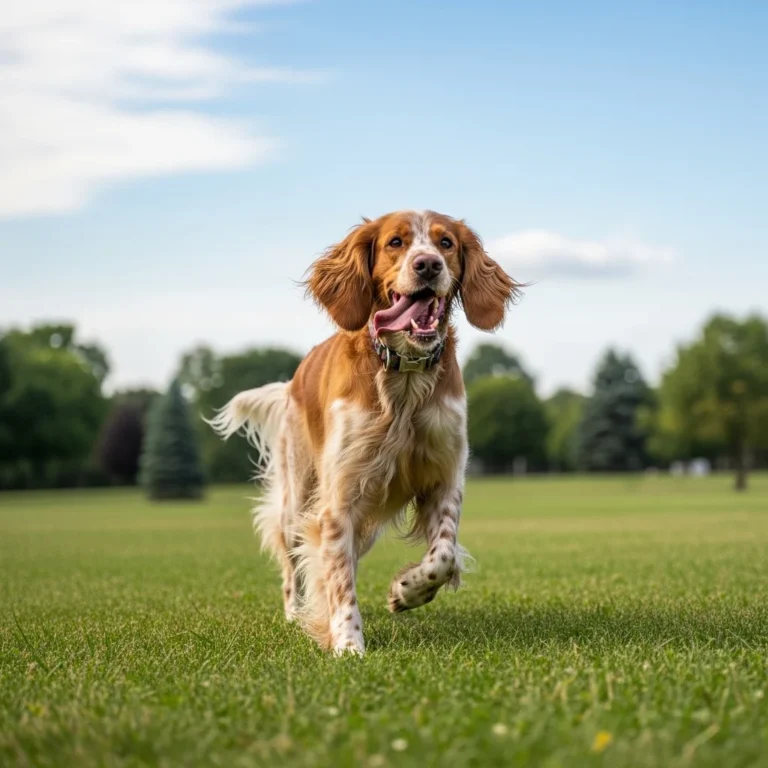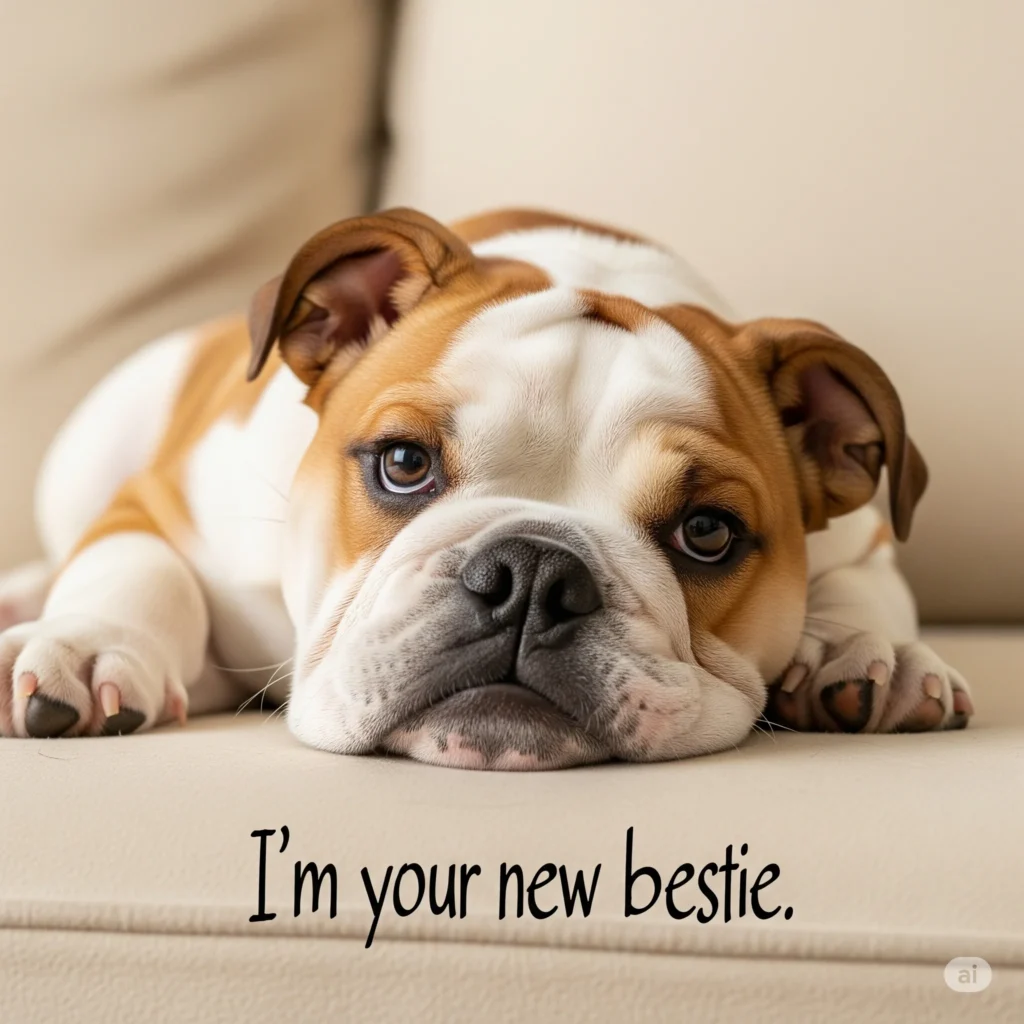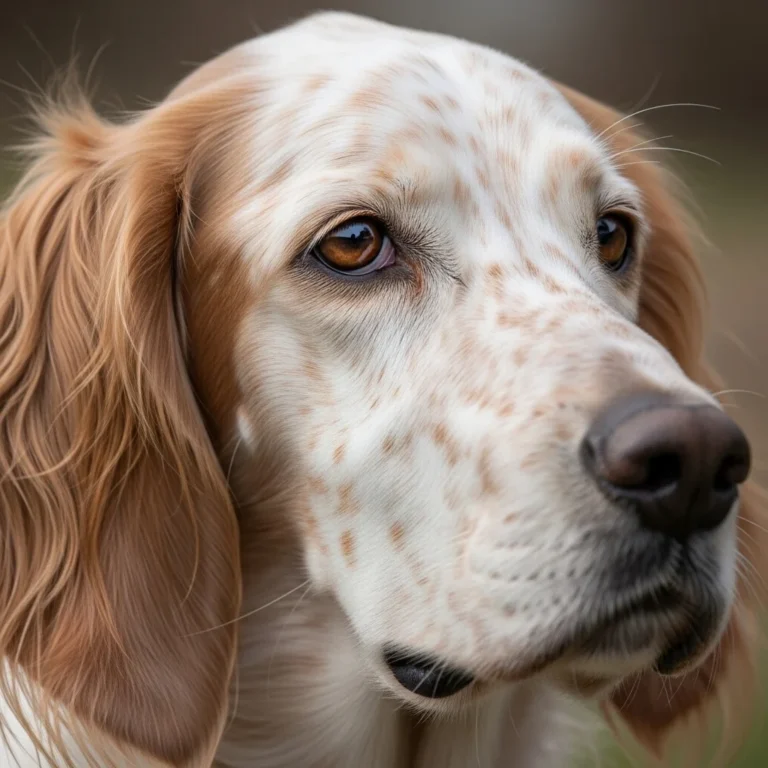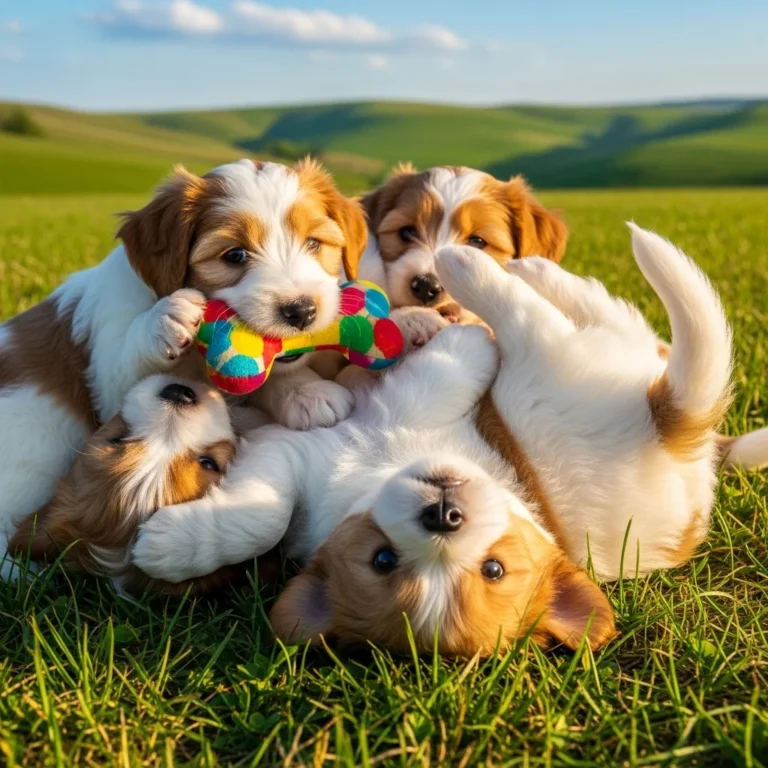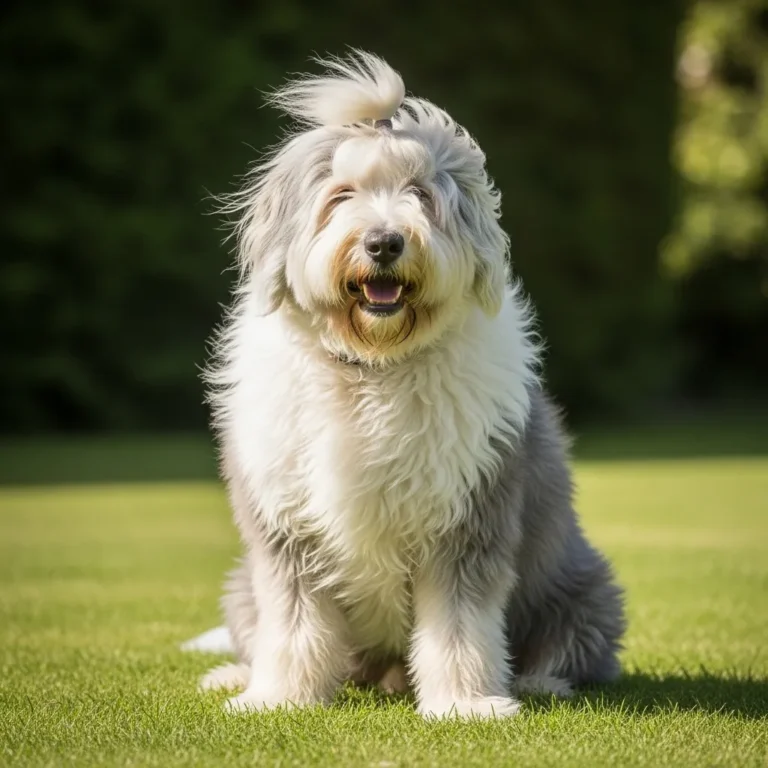
Author: DogsBlogSS Team
⚠️ Disclaimer: This article is for informational purposes only and is not a substitute for consulting a veterinarian.
old english sheepdog
There’s something irresistible about the Old English Sheepdog. Maybe it’s the cloud-like coat, the head tilt you can barely see through the shaggy fringe, or the cheerful bounce that seems to make the whole body smile. For many people, their first encounter with the breed wasn’t in real life at all — it was on television. The famous “Dulux Dog” turned this gentle giant into a global star, forever linking the breed to nostalgia, charm, and a touch of mischief.
And yet, behind the fame and fluffy coat lies a dog with a wonderful history, a loyal heart, and more personality than most people expect.
Whether you’re curious about the breed’s pop-culture legacy or considering bringing one into your home, this guide dives into everything you need to know — from temperament to grooming reality checks, from training quirks to health and cost. Written in a warm, easy-to-read tone, think of this as a friendly deep dive into the world of the Old English Sheepdog.
The “Dulux Dog” Connection: Fame & History
Why is the Old English Sheepdog commonly known as the “Dulux Dog”?
The nickname “Dulux Dog” started in the 1960s when the Dulux paint company featured an Old English Sheepdog in its advertising campaigns in the UK. The dog’s shaggy outline and cheerful presence captured hearts so quickly that, according to PetMD, the breed became strongly associated with family-friendly marketing — a symbol of warmth, comfort, and reliability.
People still refer to the breed by this nickname today, especially in regions where the commercials became iconic.
How long has the Old English Sheepdog been the mascot for Dulux paint?
The Old English Sheepdog has been the face of Dulux for more than 60 years, making it one of the longest-running brand mascots in advertising history. Over the decades, different dogs were used, but the look always stayed the same — fluffy coat, friendly face, and those unmistakable vibes of “home.”
Is the current Dulux Dog the same one used in the original advertisements?
No, but every Dulux Dog has been carefully selected to reflect the temperament and appearance of the original star. The tradition continues across generations, keeping the brand’s identity alive.
Did the popularity of the commercials affect the breed’s demand?
Absolutely. The PetMD points out that television exposure often causes spikes in breed popularity, and that’s exactly what happened. Families across the UK and beyond fell in love with the Dulux Dog, leading to surges in demand — sometimes faster than responsible breeders could manage.
This increased demand had mixed results: many wonderful homes welcomed new pets, but others underestimated the grooming and training needs of the breed.
Temperament & Family Suitability
Are Old English Sheepdogs good family pets?
In the right home, they are exceptional family companions. Dr. Emily Wilson, DVM, explains that the breed is known for its gentle, affectionate nature, often displaying a nanny-like instinct with children. Families often describe them as “sweet marshmallows in a shaggy body.”
They thrive in homes where they can be included in daily activities, whether that’s lounging around the living room or joining a family walk.
What is the temperament of an Old English Sheepdog?
If you asked owners to sum it up, you’d likely hear a blend of:
- Clownish — they love making people laugh
- Playful — they stay puppy-like for years
- Loyal — they attach strongly to their families
- Sensitive — harsh training doesn’t suit them
- Gentle — they have relaxed, affectionate personalities
They are not typically aggressive; instead, they tend to be goofy, friendly, and eager to please.
Are they known as “Velcro dogs”?
Yes — quite openly. The PetMD explains that Old English Sheepdogs often form tight bonds with their families and dislike being left alone for long periods. This “Velcro” tendency can lead to separation anxiety if not properly managed.
Do Old English Sheepdogs bark a lot or are they good watchdogs?
They do bark, especially if they sense something unusual or feel excited. Historically bred as drovers, they’re naturally alert and can make decent watchdogs — though their friendly nature means they’re more likely to greet a stranger with enthusiasm than suspicion.
The Coat: Grooming & Maintenance (The “Reality Check”)
How much grooming does an Old English Sheepdog really require?

This is where the daydream crashes into reality.
A full-coated Old English Sheepdog requires 3–4 hours of brushing per week, according to PetMD. Missing even a few days can lead to mats, especially around:
- The belly
- The armpits
- Behind the ears
- Around the hind legs
- Under the chin
Many owners schedule professional grooming every 4–8 weeks.
If you want a breed that doesn’t shed everywhere but still forget grooming now and then, this is not the dog for you.
Do Old English Sheepdogs shed?
Surprisingly, they do — but not in the usual way.
Their long double coat traps loose hair, so shedding is less visible in the home. What the coat does instead is mat. And matting can become painful if ignored.
So while they technically don’t “shed heavily,” the grooming needs are far greater than many people expect.
Are Old English Sheepdogs hypoallergenic?
No. Despite the myth, Old English Sheepdogs are not hypoallergenic. PetMD explains that no dog is completely hypoallergenic, and this breed’s dense coat can trap allergens, dander, dust, and pollen.
What is the “Puppy Ugly” stage in their coat development?
This charming term refers to the period when a fluffy puppy transitions into an adult coat. During this stage:
- The soft puppy coat falls out
- The adult coat grows in
- The texture changes
- The colors deepen
It can look a little uneven — tufts here, thin areas there — but it’s completely normal.
Can I shave my Old English Sheepdog to reduce maintenance?
According to iere and AJs Pet Care , Shaving is an option many owners choose during hot seasons or when grooming becomes too difficult. However, most veterinarians and groomers recommend trimming rather than completely shaving the coat.
A full shave can affect:
- Coat regrowth
- Sun protection
- Skin health
If you plan to maintain the show-length coat, be ready for a serious grooming commitment.
Training & Intelligence
Are Old English Sheepdogs easy to train?
Yes — but with a twist.
They’re intelligent, according to PetMD, but they also have a mischievous streak that can make training sessions feel like working with a very fluffy comedian. They respond best to:
- Positive reinforcement
- Short sessions
- Consistency
- Lots of praise
Harsh methods simply don’t work on this sensitive breed.
Do they still have strong herding instincts?
Many do. Even though they’re no longer common on farms, the herding instinct hasn’t disappeared. Some owners report that their dogs try to:
- Herd children
- Circle people during walks
- Gently nudge family members
- Follow moving objects closely
This behavior is usually playful but may require training to keep it gentle and controlled.
Will they try to herd children or cars?
Children — sometimes, yes. Cars — rarely, but anything that moves fast can trigger interest. Proper training keeps these instincts manageable.
How much exercise does an Old English Sheepdog need daily?
An adult Old English Sheepdog needs around:
- 1–2 hours of exercise per day
- Mix of walks, play, and mental stimulation
They are active without being hyper. Puppies, however, should avoid excessive high-impact exercise to protect growing joints.
Health, Lifespan, & Physical Traits
What is the average lifespan of an Old English Sheepdog?
Most live 10–12 years, though some reach 13–14 with excellent care.
What are the common health issues specific to this breed?
PetMD explains that responsible breeders screen for:
- Hip dysplasia
- Cataracts
- Progressive retinal atrophy (PRA)
- Hypothyroidism
- Deafness
- Autoimmune issues
Routine vet care and early screening are essential.
Why are their tails often docked (The “Bobtail” nickname)?
Historically, the breed was docked as a way to mark working dogs, which allowed them certain tax exemptions in old England. This tradition led to the nickname “Bobtail.”
Today:
- Many Old English Sheepdogs are born with full tails
- Docking is banned in several countries
- Some breeders still dock in places where it’s permitted
So the nickname lives on, but practices vary.
How big do Old English Sheepdogs get?
They are large, powerful dogs. On average:
- Males: 80–100 pounds
- Females: 60–85 pounds
- Height: 21–24+ inches at the shoulder
Despite their size, they move with a signature “shuffle” that’s both charming and surprisingly agile.
Cost & Acquisition
How much does an old english sheepdog puppies typically cost?
Prices vary widely depending on breeder reputation, health testing, and location.
- Pet-quality puppies: $1,500–$2,500
- Show-quality puppies: $3,000–$5,000+
Be wary of unusually low prices; they often indicate poor breeding practices.
Is it better to adopt or buy from a breeder?
Both are wonderful options, depending on your needs.
Adopting
Breed-specific rescues exist across the world and often take in:
- Owner surrenders
- Retired breeding dogs
- Dogs rescued from neglect
Adoption fees usually range from $300–$600.
Buying
If you’re set on a puppy, look for breeders who:
- Perform health testing
- Provide contracts
- Offer lifelong support
- Allow you to meet the parents
- Are members of Old English Sheepdog clubs
Avoid breeders who cannot provide health certifications.
Notice : The DogsBlogSS editorial team is dedicated to providing accurate, research-based information about dog health, behavior, and care. All our articles are fact-checked using trusted veterinary sources such as VCA Hospitals, Merck Vet Manual, and the AKC.
you may like it
